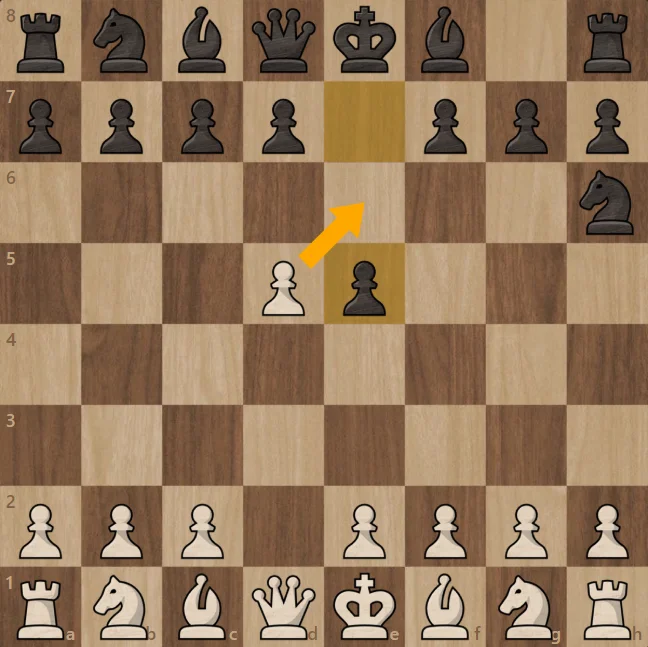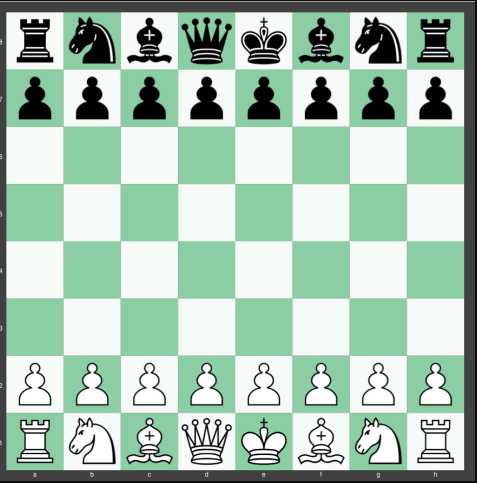En passant is a French phrase that means “while passing.” En passant in Chess is a special pawn capture rule. Let’s learn all about it.
What is En Passant in Chess?
- En Passant in French is an expression for “in passing”
- The captured pawn must be on the fifth rank
- The threatened pawn must have moved 2 squares from its starting towards the adjacent file
- The right capture can only be immediately after the opposing pawn makes the move otherwise the en passant is lost.
- one must remove the pawn when all of these conditions are met as if only one square had moved the pawn.

Get Your Basics Right for En Passant in Chess
Due to the scarce nature of every game, even experienced chess tutors may forget to talk about it to avoid confusing their students as they learn common fundamental ideas.
However, if you want to avoid foolishness and improve chess, you need to learn chess in the passing by using a rule you do not understand.
You will learn and understand en passant by reading this article. Perhaps you can use en passant to surprise your opponent and acquire a crushing advantage in your own games.
En Passant Chess Move

It is a French phrase that means “while passing.” En passant is a special pawn capture rule in chess. We’re all familiar with how pawns move. In most cases, a pawn can only move one square forward, however, chess rules may give it more alternatives in certain situations.
The piece can even move two squares forward from its starting position if desired. A pawn must move one square diagonally if it wishes to take another piece. Importantly, the pawns can’t move backward. They can only move in forward direction. They are like loyal foot soldiers. The exception to this rule is en passant.
History Of The En Passant Rule
Allowing en passant capture was one of the last significant rule changes in European chess between 1200 and 1600. Along with the two-square first move for pawns, castling, and queens and bishops having an unrestricted range (Davidson 1949:14,16,57). In his 1561 book Libro de la invencion liberal y arte del juego del axedrez. Spanish master Ruy López de Segura explains the rule (Golombek 1977:108). Hence, The people initially accepted the rule in 1880 but on a small scale. One didn’t accept it widely until the Italians changed the rules in 1880.
One created En Passant to prevent the use of the traditional and old two square method. The rule specifically permits a pawn on a player’s fifth rank to capture an opponent’s pawn on an adjacent file that moves two squares on its first move as if it had only progressed one square (Davidson 1949:16). Due to their isolation from European chess prior to that time. Asian chess variations do not include any of these moves.
En Passant Examples

The pawn capturing must be on the fifth rank (imagine a White pawn on d5).
If White possesses a pawn on d5, Black’s c-pawn and e-pawn could be threatened with en passant capture if they advance from their starting squares.
The right to capture en passant is forfeited if the capture is not made on the move immediately after the opposing pawn moves.
If all of these requirements are completed, the threatening pawn can be eliminated as if it had merely moved one square. As a result, if White holds a pawn on d5 and Black’s c-pawn moves from c7 to c5, White may capture Black’s c-pawn and win the game, and White’s own pawn will move to c6.
Why Do We Use En Passant in Chess?
You can en passant 8 times. It can only happen when your opponent moves a pawn twice and ends up by the side of your pawn
They made the En passant to neutralise the double step or double square step of a pawn from its initial position.
The double square step of a pawn evades capture by an opponent’s pawn if it was to move one step square exactly where it can be captured – the point of en passant is not to eliminate the risk of a pawn getting captured by being able to move two squares forward.
Thank you for reading the blog we hope that you learnt something new and useful
Share with your friends





